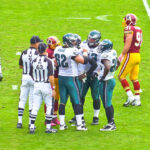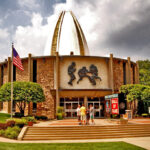In the weeks following their shocking exit from the AFC playoffs the San Diego Chargers have announced plans to release LaDainian Tomlinson and not to tender Darren Sproles.
The first announcement didn’t surprise me. After seven fantastic seasons Tomlinson has struggled with injuries and performance the last two years, finishing 2009 with the lowest number of carries and yards-per-carry averages of his career.
The Sproles announcement, on the other hand, I found just short of stunning. First off, the guy has been a fireplug when he’s had the opportunity to play regularly, including the January 2009 playoff game where he had more than 300 all-purpose yards in the Chargers’ overtime win over Indianapolis.
Second, dumping both Sproles and Tomlinson left San Diego’s depth chart virtually bare, with just Michael Bennett – who hasn’t had as many as 50 carries in a season since leaving Minnesota after the 2005 season – listed as a halfback and two fullbacks, Jacob Hester and Mike Tolbert, who have combined for just 78 carries between them in their two NFL seasons.
Tomlinson and Sproles combined to take 74 percent of the team’s rushing attempts in 2009 and 84 percent of them in 2008 while amassing 75 percent of the team’s rushing yards in 2009 and 83 percent in 2008.
And while he’s struggled, Tomlinson still scored 23 of the Chargers’ 30 rushing touchdowns the last two seasons with Sproles compiling four of the remaining seven.
In fairness, few are claiming the diminutive Sproles could take the pounding associated with being a 20 to 25 carry per game back. But with the Chargers turning into more of a pass-oriented offense with Philip Rivers at the helm, I’ve always wondered why he didn’t get four to five passes minimum a game along with another 10 to 12 carries out of multiple-receiver spread formations where he would have had more opportunities to get into open spaces.
On the other hand, Sproles made a ton of money in 2009 as the team’s franchise player and it is likely San Diego didn’t want to spend that kind of cash on a part-time player.
Furthermore, while the depth chart looks ugly at first glance, the cupboard might not be as empty as it looks.
Hester arrived in 2008 as a third-round pick out of Louisiana State. Lindy’s Sports Annuals called him the “inspirational leader of [the] Tigers whose motor never stops” and added that he “will work hard at all assignments.”
Most of those assignments thus far have involved blocking for Tomlinson and Sproles but in 40 career carries the 235-pound motor home does have a 4.2 yard-per-carry average.
Tolbert, who arrived the same year as a rookie free agent, is even bigger than Hester and has averaged 4.9 yards-per-carry in two fewer carries.
Neither of those guys are likely to take on a full-time feature role in 2010 but in this running back-by-committee era they can provide a piece of the overall Chargers’ running game solution.
While it’s risky for a top-notch, likely again playoff-bound team to put their eggs in the basket of a rookie, I would guess the NFL draft will also provide the Bolts with some new resources for their ground game.
The Chargers reportedly aren’t likely to get a shot at C.J. Spiller from Clemson without making a move up the board, but guys like Georgia Tech’s Jonathan Dwyer, Fresno State’s Ryan Mathews and California’s Jahvid Best are, by many accounts, being projected anywhere from the late-first to early-second round.
And running back is the one position coaches and scouts generally say is easiest for rookies to pick up in time to contribute right away.
If they don’t want to go the rookie route – or if they want to at least have a backup plan in case the rookie of their dreams doesn’t pan out, a Chester Taylor might be ready to move on from Minnesota. Guys like Brian Westbrook and Thomas Jones, who helped the Jets knock the Chargers out of the playoffs, are going to be on the free agent market as well.
So while if I was running the Chargers I’d have tried to find a way to keep Sproles on the roster I can see why their upper brass made the decisions they did.
It’s some risky maneuvering. But with an uncapped year all but a foregone conclusion for 2010, a deep draft and teams all around the league making moves at the position, letting their top two running backs from the last two seasons go at the same time might not be as crazy as it looks on the surface.







no matter what anyone says the Chargers should have kept L.T.